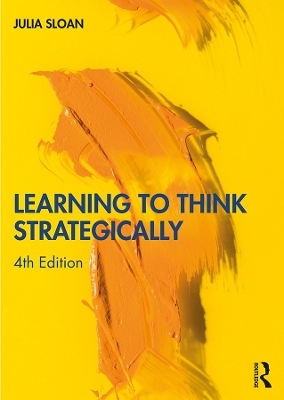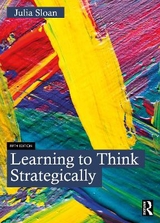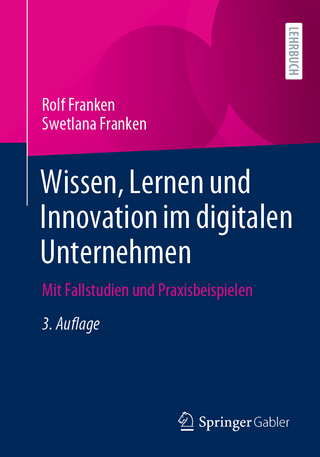
Learning to Think Strategically
Routledge (Verlag)
978-0-367-14146-2 (ISBN)
- Titel erscheint in neuer Auflage
- Artikel merken
In this fourth edition, the author offers an expanded definition of strategic thinking based on critical theory. This book highlights the role of informal learning, underscores the relevance of engaging in the arts, and has global application for those tasked with making strategy in this rapidly changing world. Sloan presents a previously unexamined account of the relationship between strategic thinking and the learning process involved — taking learning from the academic to the everyday. New features include an expanded list of learning methods to develop strategic thinking, a more extensive look at global cultural perspectives of strategic thinking, additional scenarios and case vignettes, and online resources comprising test bank questions and lecture slides.
This book is vital reading for MBA, Strategy, Leadership Development, and Executive Education students. The practical nature of this book also makes it valuable for business and policy executives, as well as managers and emerging leaders looking to develop their strategic thinking skills.
Julia Sloan is a Professor of Strategic Thinking at Columbia University, USA, and Principal of Sloan International, Inc., a New York-based consulting firm specializing in strategic thinking for global business and government leaders. A Fulbright Fellow and Researcher-in-Residence Fellow, she has also been recognized with numerous teaching awards.
Part 1: How did we Get Here? 1. Chronology of Strategy 2. Contemporary Competing Views of Strategy 3. Global Sketches of Strategy Part 2: How do we Learn to Think Strategically? 4. What is Strategic Thinking? 5. Informal and Formal Learning Defined 6. Context and Learning Transfer as Factors in the Strategic Thinking Process 7. Three-Stage Model for Learning Strategic Thinking Part 3: How do we Get Started? 8. Framing as a Structural Process of Strategic Thinking 9. Learning Domains Used for Strategic Thinking Part 4: How do we Test the Foundation? 10. Role of Critical Dialogue in the Strategic Thinking Process 11. Role of Critical Inquiry in the Strategic Thinking Process Part 5: How do we "Know" This?: Intuition as an Outgrowth of Experience 12. Intuition as a Must-Have for Learning to Think Strategically 13. The Roles of Analysis and Intuition in Strategic Decision Making Part 6: What Role Does Culture Play? 14. The Role of Culture on Strategic Thinking 15. Debunking the Myth of the Chosen Few: Five Attributes Part 7: How to Become a Stronger Strategic Thinker? 16. Strengthen Strategic Thinking Through the Arts 17. Three Unconventional Approaches that Support Learning to Think Strategically Part 8: Where do we go from Here? 18. Where We’ve Come From and Where We Can Go: Some Suggestions
| Erscheinungsdatum | 25.09.2019 |
|---|---|
| Zusatzinfo | 9 Tables, black and white; 15 Line drawings, black and white; 1 Halftones, black and white; 16 Illustrations, black and white |
| Verlagsort | London |
| Sprache | englisch |
| Maße | 174 x 246 mm |
| Gewicht | 644 g |
| Themenwelt | Wirtschaft ► Betriebswirtschaft / Management ► Unternehmensführung / Management |
| ISBN-10 | 0-367-14146-9 / 0367141469 |
| ISBN-13 | 978-0-367-14146-2 / 9780367141462 |
| Zustand | Neuware |
| Informationen gemäß Produktsicherheitsverordnung (GPSR) | |
| Haben Sie eine Frage zum Produkt? |
aus dem Bereich



